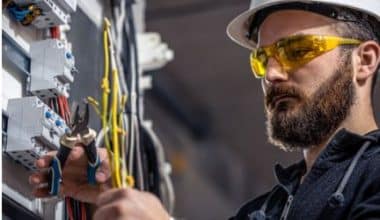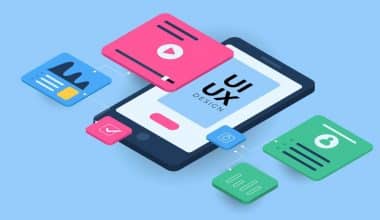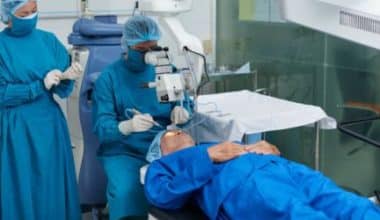Finding the appropriate clothes to wear to an interview may be as stressful as the interview itself. We’ve all heard that initial impressions are often lasting. Wearing clothes that flatter your figure and complement the style of the interviewing firm can make or break your chances of landing “that” job. This comprehensive guide to what to wear to a job interview for men and women provides guidelines to ensure you look your best, feel comfortable, and present as the ideal fit for the hiring organization.
According to statistics, the way you dress and walk through the door at a job interview determines 55% of initial impressions, and 65% of hiring managers feel clothes might be the determining factor between two similar prospects.
Steps for Deciding What to Wear to an Interview
Follow these methods to choose your interview clothes while conserving mental resources for the remainder of your interview preparation.
#1. Consider some general guidelines.
Dress one level above what people in the office wear. For example, if a company’s management and employees normally wear jeans and T-shirts, your one step up may be non-denim slacks and a tucked-in shirt.
Make it a priority to feel at ease and confident. Even if you’re going to wear a tie and a button-down shirt, make sure your clothes don’t restrict your movement or irritate your skin so you can concentrate on the talk with a possible employer. You may even opt to wear what you already know is comfortable rather than purchasing a new set of clothes.
Check that every item in your ensemble is clean, wrinkle-free, and fits perfectly. These things alone can elevate your appearance.
#2. Look into the company’s dress code.
In addition to dressing a level higher, you’ll want to understand the company’s environment, culture, dress code, or workplace attire standards. You can find out by doing the following:
Calling or emailing your interview contact to inquire about the company’s dress code. Here are some such questions: “How do individuals who work here normally dress?” ” or “What would you wear to an interview with this company?” ”
Investigating the company’s website and social media profiles for photographs that provide hints about usual clothing
Visiting the company’s headquarters (if possible) and observing how staff dress
Consider the examples in these four business attire categories once you’ve learned the company’s dress code:
- A fitted suit, button-down shirt with tie, blouse, lace-up dress shoes or close-toed pumps, and stockings or dress socks may be appropriate in formal settings.
- Staff personnel in casual organizations, such as tech companies or start-ups, may wear a variety of clothing, ranging from khaki pants and button-downs to jeans, T-shirts, and hoodies. You might dress for your interview in something more business casual rather than something excessively casual. Business casual clothes often combine parts of formal and casual attire and can include non-denim slacks, blazers, button-downs, and non-business suit dresses and skirts.
- A more fashion-forward dressing culture may be found in creative environments such as a design firm, art gallery, or clothes boutique. In this situation, you might select outfits and accessories that represent current trends and are similar to the styles worn by staff and clients.
- Dress rules in industry-specific contexts can vary dramatically between interviews and what is worn on the job. For a personal trainer interview at a fitness studio, for example, you might wear business casual for the face-to-face portion of the interview and sports attire for a physical demonstration of your training approach. Even if you’ll be working in scrubs or a lab coat, you should dress professionally for an interview at a medical facility.
#3. Dress appropriately for the interview location.
The clothes you wear may be determined by an interview on Zoom or at a company’s headquarters. Choose colors that contrast with your background to make you stand out when interviewing on Zoom, but don’t clash too much. Keep your physical comfort in mind when interviewing on-site. For example, air-conditioned office areas can feel cold after a short amount of time, but workout centers can feel warm. A sturdy pair of shoes or weather-resistant clothing may be required for an outside setting.
What to Wear to an Interview Examples (For Women)
“I don’t have anything to wear.”
How many times have we all uttered it, particularly before a major occasion such as an interview? I’m sure it’s far too many times for most of us to count.
My goal is to make things easier for you. Interviews are already stressful. We shouldn’t be stressing over our attire while also trying to figure out how to write a charming and intelligent response to “so, tell me about yourself.”
My interview outfit philosophy is based on two fundamental principles:
1. Comfort.
You must be comfortable regardless of whether the dress code is professional or casual. When you’re happy with how you appear and feel, you exude confidence and can concentrate on what’s important that day. So let’s avoid anything too hot, too tight (breathing is crucial), itching, and so on.
2. Nobody should notice your attire
Your interviewer will be distracted if your clothes and accessories are too loud (even if they are cute). You will draw unfavorable attention to yourself if your outfit does not fit properly or appears sloppy. Keep the spotlight on you and all the excellent characteristics you bring to the table by wearing neutral, well-fitting clothing. For interviews, channel your inner Meghan Markle and save your Lady Gaga-inspired attire for the weekends.
#1. Examples of What Women Can Wear To a Smart Casual Interview
Smart Casual is a rather ambiguous style, making it difficult to know where to draw the line between too casual and too formal. I liked this comment from Trend Spotter that distinguishes between Smart Casual and Business Casual:
“Smart casual attire is frequently confused with business casual dress code due to its sophisticated yet relaxed look.” While many ensembles can fit into both categories, there are certain distinctions between them. For example, business casual attire is more conventional, but smart casual attire is more fashion-forward.”
Overall, Smart Casual is advantageous since it allows you to demonstrate some of your individuality throughout the interview. Just remember to err on the side of caution. If you’re unsure whether something is too casual, it usually is. Let’s go over some wardrobe ideas to help you look both smart and casual:
What Women Should Wear To an Interview Example #1
- Top: Button-down top. You don’t have to tuck it all the way in for Smart Casual. I’m a big lover of the French Tuck, which Tan France from Queer Eye popularized recently.
- Bottom: Chinos at the bottom (navy, olive, khaki). I like ankle-cropped pants for this style since they are more casual.
- Footwear: Ballet flats as footwear. You can wear shoes with a color or a light pattern if your outfit is neutral. However, if your top already has some designs, choose more plain shoes.
- Accessories: Accessorize sparingly. If you wear earrings, pair them with a modest necklace, bracelet, or watch.
How simple was that? I’m sure you could put something like this together without purchasing anything new. Let’s try a somewhat different take on Smart Casual.
What Women Should Wear To an Interview Example #2
- Top: Blouse (change for a sweater if it’s cold!)
- Bottom: black denim jeans (make sure to stay away from blue jeans)
- Shoes: Low-heeled booties
- Accessories: Again, keep it simple with the accessories. Choose delicate earrings to complement a simple gold or silver necklace.
With Smart Casual, you should try to express yourself while wearing simple and modest clothing. You should appear easygoing but polished. You know you hit the jackpot if you can wear this outfit to work in the morning, the interview in the afternoon, and then supper with your parents.
#2. Examples of Women Should Wear To a Business Casual Interview
A popular interview style is a business casual. It’s also usually a safe bet. This outfit strikes an appropriate balance between casual and corporate, allowing you to enter into most offices and feel at ease.
Your Business Casual attire should be more formal than your Smart Casual outfits. You may definitely display your personality here, but there are some rules you should follow to ensure you nail this dress code.
A fitted blazer is the simplest way to dress up this appearance. It doesn’t have to be a formal suit blazer; there are plenty of alternative options that are more trendy. Another Business Casual recommendation is to avoid denim altogether (clearly, no blue jeans, but no black either).
Example of a Women’s Outfit #1
- Top: Tailored blazer + blouse (conventional tuck-in rather than French Tuck)
- Bottom: Cropped dress pants or navy chinos
- Shoes: Loafers or flats in a neutral color.
- Minimal accessories. Wear your dependable watch and stud earrings.
If your blazer is black or blue, go with a soft-patterned blouse. And if you must purchase that blazer, there are a plethora of fairly priced, incredibly cute options available. I bought one from H&M for an interview a few months ago and now I wear it with my weekend outfits all the time!
Example #2 of a Woman’s Outfit
- Simple knee-length black dress with black stockings
- Shoes: Low-heeled flats or booties
- Accessorize with a simple necklace and earrings.
The basic purpose of Business Casual should be to maintain things professional yet relaxed. And don’t be afraid to express yourself! Just make sure to balance any patterns or colors with neutrals.
#3. Examples of What To Wear To a Formal Business Interview Outfits for Women
This is, without a doubt, my least favorite category. To be honest, it takes a lot more work and isn’t as simple to follow my comfort rule in formal dress. But it’s not impossible. I guarantee it!
Women now have more Business Formal alternatives than ever before thanks to changing fashion trends. Today’s suits appear feminine and, dare I say, trendy. Okay, stylish may be a stretch, but at least you can wear a suit without being engulfed with shoulder pads and unnecessary fabric.
For those who do not wear pants, Business Formal can also include pencil skirts or dresses with a blazer. Rent the Runway is an excellent choice if you don’t want to buy these formal (and sometimes expensive) dress pieces. Instead of buying expensive clothes that will most likely sit in the back of your wardrobe for eternity after your two-hour interview, you may rent a Business Formal outfit.
Example of a Women’s Outfit #1
- Top: Blazer + white button-down
- Bottom: Cropped blazer-matching dress pants
- Shoes: Flats with a tailored fit (black shoes are your safest bet)
- Accessories: Choose basic gold or silver accessories. Earrings and a watch will suffice.
This is a fairly typical formal interview suit. You can never go wrong with black and white. Additionally, don’t be afraid to wear flats! Especially if heels make your feet hurt. There are many flats that appear decent enough to wear with a Business Formal outfit.
Example #2 of a Woman’s Outfit
- Top: Blazer + blouse
- Bottom: Matching blazer and dress pants (slight flare or boot cut).
- Shoes: Pumps in black (for my ladies who love heels)
- Accessories: You know the drill – choose a few items and keep it basic!
I understand that most of us would not put on a suit if we didn’t have to, but it doesn’t mean you should disregard the comfort guideline. You can appear formal while remaining relaxed. Make sure your dress pants fit you nicely (length, waist, etc.), and pick a feminine suit if you normally wear feminine clothing. They are present!
What To Wear To An Interview (For Men)
Now it’s our turn, boys!
My goal is to make this as easy and straightforward as possible. The good thing is that our options are rather straightforward. We can start with a few quick fixes and a solid foundation, and then you can improvise and style right away.
We’ll begin with the most versatile and easygoing look in our arsenal:
#1. What To Wear To Smart Casual Interview For Men Examples
Smart Casual is defined as “neat, traditional, yet reasonably informal in style” by the Oxford Dictionary.
According to the fashion website Mr. Porter, it is “pretty much anything smarter than a tracksuit but less formal than a suit.”
I imagine it as something you’d wear on a first date with someone a little out of your league. You want to look crisp, but you also don’t want to appear overly effortful.
A neutral button shirt, chinos, and shoes that are finer than sneakers are your best chance. While jeans are common in non-interview Smart Casual attire, I would not advocate wearing them to your interview. Better to be safe than sorry. Consider the following examples:
Example of a Men’s Outfit #1
- White button-down shirt, steamed and wrinkle-free
- Always wear a belt that matches your shoes (light shoes + light belt, dark shoes + dark belt).
- Khaki chinos at the bottom
- Clark’s desert boots or a pair of casual leather oxfords
- Watches are always a good addition here.
White shirt, khakis, and leather shoes. That is a true classic. Let’s take another look:
Example #2 of a Men’s Outfit
- Gingham button-down top, matching sweater/jumper
- Always wear a belt that matches your shoes (light shoes + light belt, dark shoes + dark belt).
- Navy chinos at the bottom
- Shoes: Lace-up leather oxfords
- Accessories: None are required, but a watch is a nice addition, and remember to tuck in that button-down if you’re wearing a sweater.
When it comes to smart casual, the greatest credo is “when in doubt, toss it out,” which means to be conservative and safe. If you’re unsure whether or not you should wear something, don’t.
You’ll be fine if you dress like the gorgeous man in the picture above (feel free to swap out the shirt and pants for other neutral color combinations).
#2. What To Wear To Business Casual Interview For Men Examples
For us, Business Casual has a little more structure. The rules are more defined and simple to follow – we’re dressing up the same ideas from our Smart Casual style.
For example, instead of a free-form button-down, opt for a shirt with more structure. Instead of damaged chinos, consider wearing clean, fitted chinos or slacks.
While you don’t need to break out the suit jacket just yet, Business Casual usually requires some form of sport coat or blazer (but no tie). Consider the following examples:
Example of a Men’s Outfit #1
- Ironed white button-down top
- Gray athletic coat with no structure
- Always wear a belt, and make sure it matches the color of your shoes.
- The bottoms are navy slacks.
- Shoes: oxfords or loafers in polished leather.
- Accessories: Watches are wonderful, and if you want to liven things up, add a pocket square to your sport coat. At this point, no tie is required.
See what I mean? It’s really simple. Don’t be afraid to experiment with elements such as the “jacket” and shirt style. You want to appear professional, but you can also show some personality:
Example #2 of a Men’s Outfit
- White and blue checkered dress shirt ironed
- Gray cardigan jacket
- Belt: Always match your belt to the color of your shoes.
- Bottom: Navy dress chinos, ironed
- Shoes: Dark leather dress shoes that have been polished.
- Accessories: Watches are wonderful, and if you want to liven things up, add a pocket square to your sport coat. At this point, no tie is required.
Business casual is a simple look to pull off. You’ll be all set if you just think about upgrading your smart casual appearance with a jacket — or you can just match our guy in the photo above to make things extra simple!
#3. Examples of What To Wear To Business Formal Interview for Men
Our most formal option, as well as the simplest to prepare for. You’re wearing a complete suit and tie for this one!
The most important consideration here is matching the suit and shoes. The outfit will already match, but you don’t want to mar the look with a mismatched pair of shoes. They don’t work with the clothing just because they’re fancy. Business Insider has a fantastic guide on matching suits and shoes.
When it comes to suiting up, the finest way to express yourself is through your tie. But be careful, it’s easy to get carried away. You should still keep things professional/conservative, but don’t be afraid to branch out beyond basic black or blue if you feel prompted.
Example of a Men’s Outfit #1
- White dress shirt, pressed
- Jacket type: Suit jacket
- There is no belt.
- Bottom: Wear pants that complement your jacket.
- Shoes: Shiny formal dress shoes
- Accessories: A tie is required here, as a watch, and a pocket square is always a good touch if that’s your thing.
Black and blue suits are a very frequent and traditional combination. They look fantastic and are unquestionably a safe bet. If you want to liven things up, you can change the suit color to something less typical, such as charcoal or gray.
Just don’t go all Miami Vice on us in white, khaki, or seersucker. You could think I’m dumbing it down too much – I wish I wasn’t, because I’ve seen it.
Men’s Outfit Example #2
- White dress shirt, pressed
- Suit jacket in light gray
- There is no belt.
- Bottom: Light gray suit pants that coordinate with the jacket.
- Shoes: Formal dress shoes in brown or black.
- Tie and watch as accessories
Business Formal is the most secure option. If you go with this, you’ll never be underdressed, and it’s a wonderful choice if you’re not sure what to anticipate. I’ve never heard of somebody getting turned down for a job because they were overdressed, but I’ve heard plenty of stories about the opposite. In addition, everyone looks great in a full suit and tie!
What Not to Wear to an Interview
While you have some freedom in selecting your interview clothes, there are a few things to avoid:
- Strong perfume or cologne
- A plethora of accessories
- Wrinkled, ripped, or ill-fitting clothing
- Garments that make you feel uncomfortable, restricted, or entirely out of place
- An attire that does not reflect the brand or culture of the firm for which you wish to work.
- A mix of wildly disparate patterns, colors, and textures
- Athletic shoes or flip flops
What Should I Wear to a Law Firm Job Interview?
For law firm interviews, dress conservatively. Wear a suit and slacks or a skirt. Dark and neutral colors, such as gray, navy, or black, are frequently preferred.
What Colors Should I Avoid Wearing To a Job Interview,?
In general, you should avoid wearing anything that detracts from your credentials. Avoid wearing all-black outfits, neon hues, or busy patterns to job interviews.
What to Wear to an Interview: Key Takeaways
You’ve made it! Hopefully, you now feel a little more confident about what to wear to an interview.
Here’s a quick rundown of the main things we discussed:
- Prepare by researching the organization ahead of time, and learning what employees wear to work and what the culture is like.
- Choose an outfit that is one tier above the workplace culture (e.g. if they are Smart Casual, plan to wear Business Casual)
- When in doubt, formalize! You can never go wrong when wearing a suit. Worst case scenario, it’ll make for a good narrative once you’re employed.
If you’re still unsure about what to wear to an interview or have particular questions regarding your circumstance, leave a comment below!
Frequently Asked Questions
Can I wear all black to an interview?
Wearing all black to the interview may be perceived as too serious. If you must wear black, place another color close to your face to lessen the effect.
Are jeans OK for interview?
The answer isn’t always clear, but jeans are never proper interview clothes, regardless of whether you’re a student, seeking a part-time or hourly-rate job, or interviewing with a tech business.
Should you wear jewelry to an interview?
When it comes to jewelry, men should only wear a watch and a wedding band to a job interview. Women should only wear stud earrings and one or two other items of plain jewelry. When it comes to necklaces, avoid layering. Wear a single simple, classic necklace, such as pearls.
Related Articles
- Men’s Clothing Business Casual: Best business casual for men (+tips)
- Clothing Business Casual: All you need (+ quick tips)
- INTERVIEW CLOTHES FOR WOMEN: How To Dress For An Interview
- WHAT TO SAY IN AN INTERVIEW: Tips on What To Say
- BAG BRANDS: 2022 Top 25+ Luxurious and Designers Bag Brands






